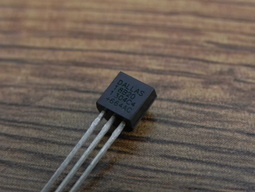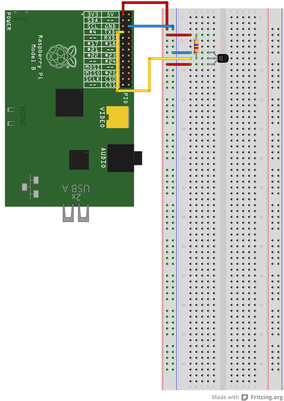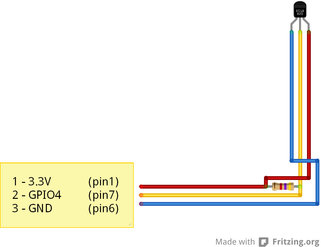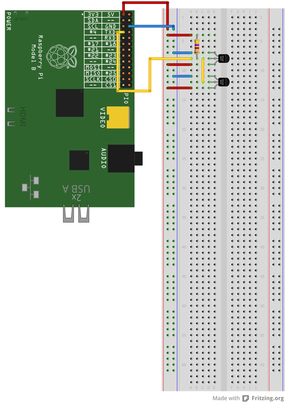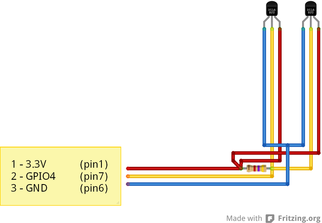Thermal sensor DS18B20 via 1Wire bus
RPi can be used to interact with real world. To interact it needs some input. This input can be temperature. Since it is quite simple to connect thermal sensor to RPi, I will show you how to do that. At first you will need:
- DS18B20 (thermal sensor)
- 4.7 kOhm resistor
- piece of cable
Thermal sensor can be bought in any shop with electronics, but be aware of price. At my hometown, one store sells it for 14€/piece, second store sells it for <1€/piece :) DS18B20 is also quite accurate +/- 0.5°C. Temperature range is from -55 to 125°C. Other properties can be found in datasheet. Thermal sensor communicate via 1wire bus. And here is a little problem. RPi doesn`t have support for 1wire bus in hardware, bus is only "emulated" on GPIO. This results in fact that on other side of GPIO pin with connected thermal sensor is RPi`s Broadcom SoC. 1wire bus can be really long (with parasite power supply up to 500m). IT IS VERY DUMB to have 500m "antenna" leading directly to CPU! This way of connecting DS18B20 is only suitable and safe for distances up to 20cm. If you want to have thermal sensor further, follow this guide. Now, you can connect thermal sensor this way. Again, breadboard and soldering version of scheme.
...and if you want to solder...
Now when sensor is connected, we can setup RPi. At first, as I stated, 1Wire implementation is only software, you have to load kernel module.
modprobe w1-gpio
modprobe w1-therm
This modules are not loaded automatically at bootup. To do so, edit "/etc/modules" file:
nano /etc/modules
And add two previous modules
w1-gpio
w1-therm
Now close file (CTRL+X...) and save changes (...press "y" and Enter). Change directory to "/sys/but/w1/devices" and list it:
cd /sys/bus/w1/devices
ls
You should see folder named to something like "28-00000482b245". This number is unique for every thermal DS18B20, something like MAC on you network adapter. "cd" into this folder and "cat w1_slave" file:
cd 28-C2D5C4040000
cat w1_slave
You will get output similar to this:
71 01 4b 46 7f ff 0f 10 56 : crc=56 YES
71 01 4b 46 7f ff 0f 10 56 t=23062
Temperature on my sensor is 23.062°C right now. Output can be easily stripped via "tail" and "cut" commands:
cat w1_slave | tail -1 | cut -d'=' -f2
And this number can be easily used in scripts, programs, alerts...
Connecting more thermal sensors to 1Wire bus
On data link of 1wire bus can be connected large number of sensors simultaneously. Here is a guide how to connect second sensor to 1wire bus. Reading of values is simple, in "/sys/bus/w1/devices" will be created next folder named after sensor`s unique hardware address. And here is electrical scheme:
And breadboard-free version...
